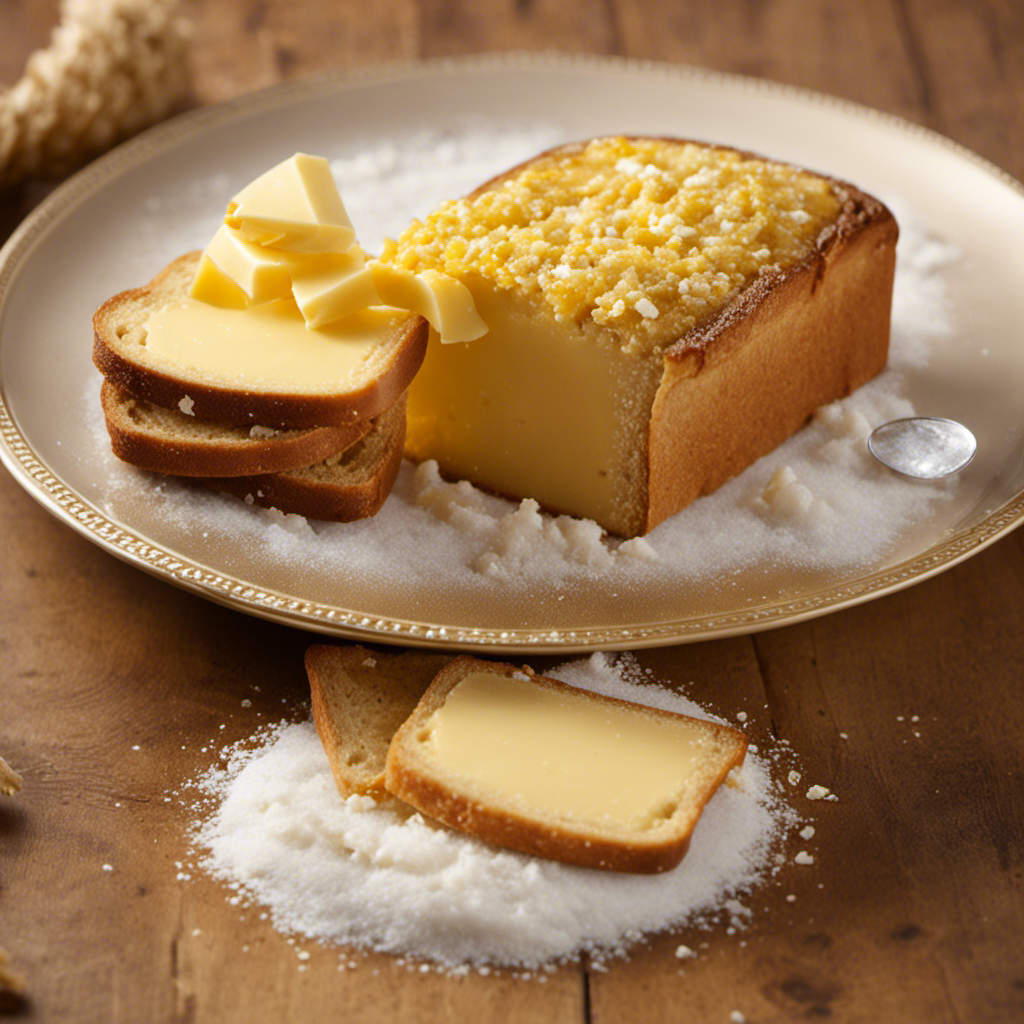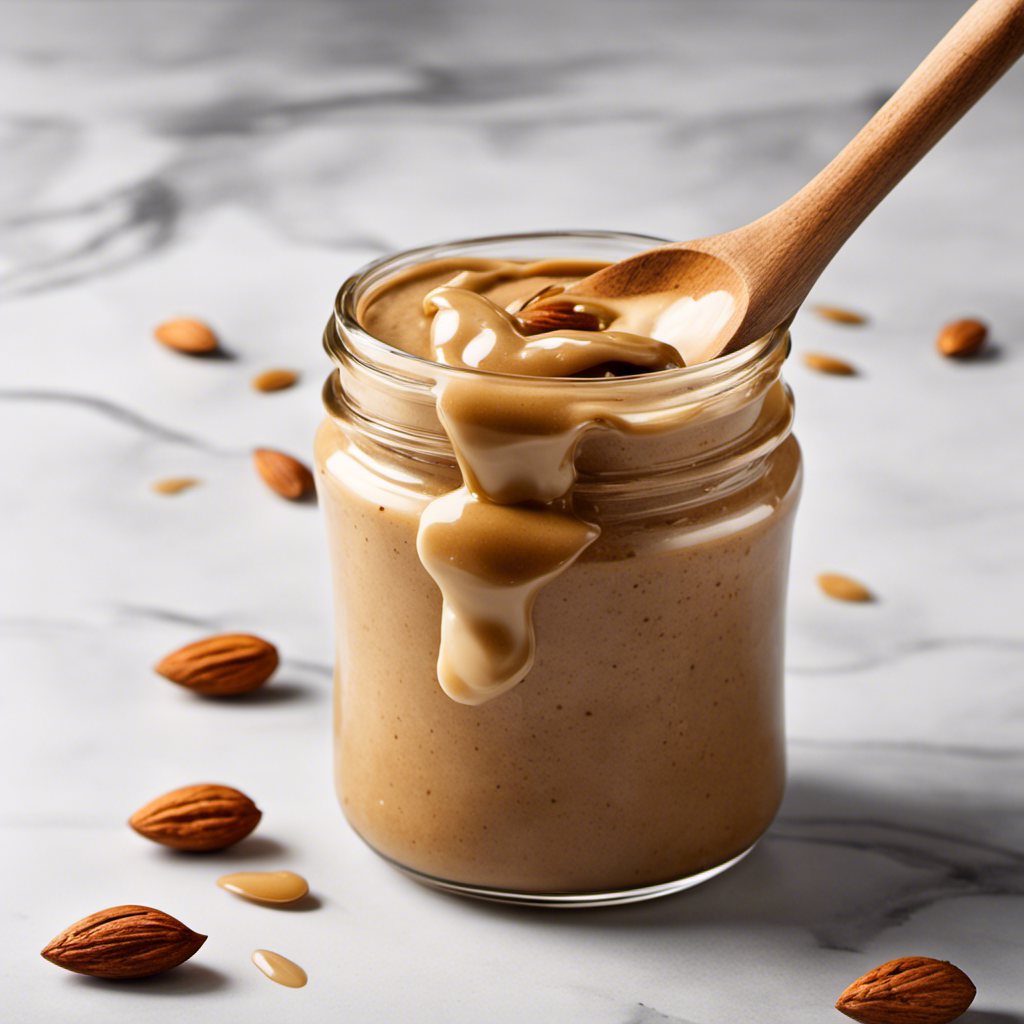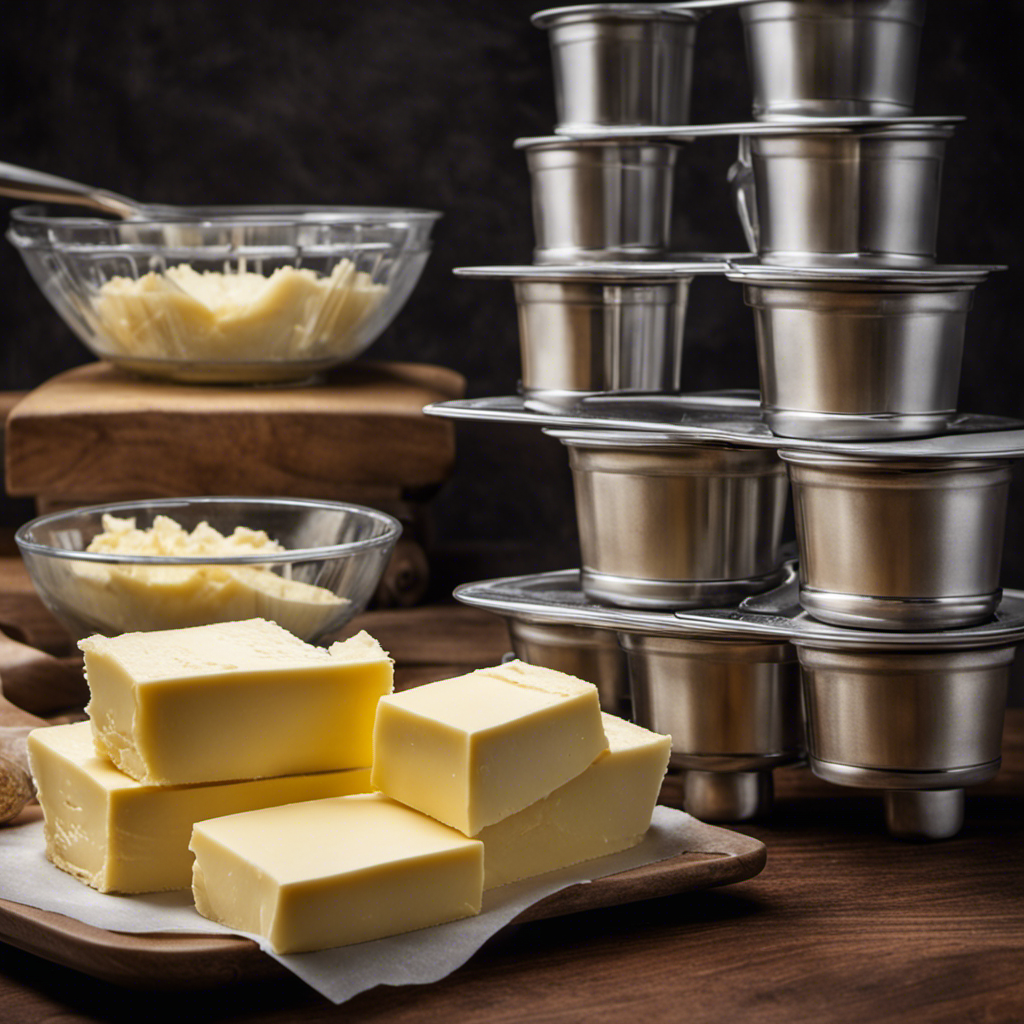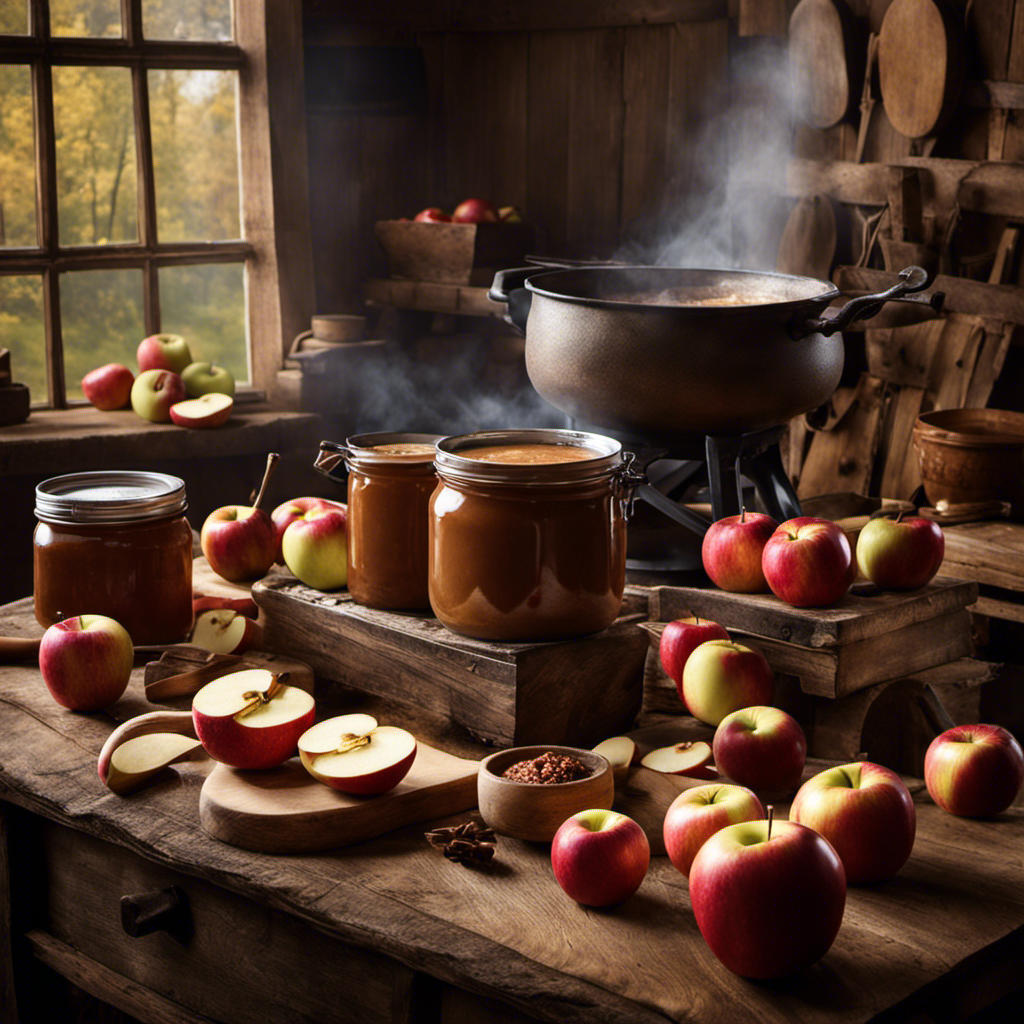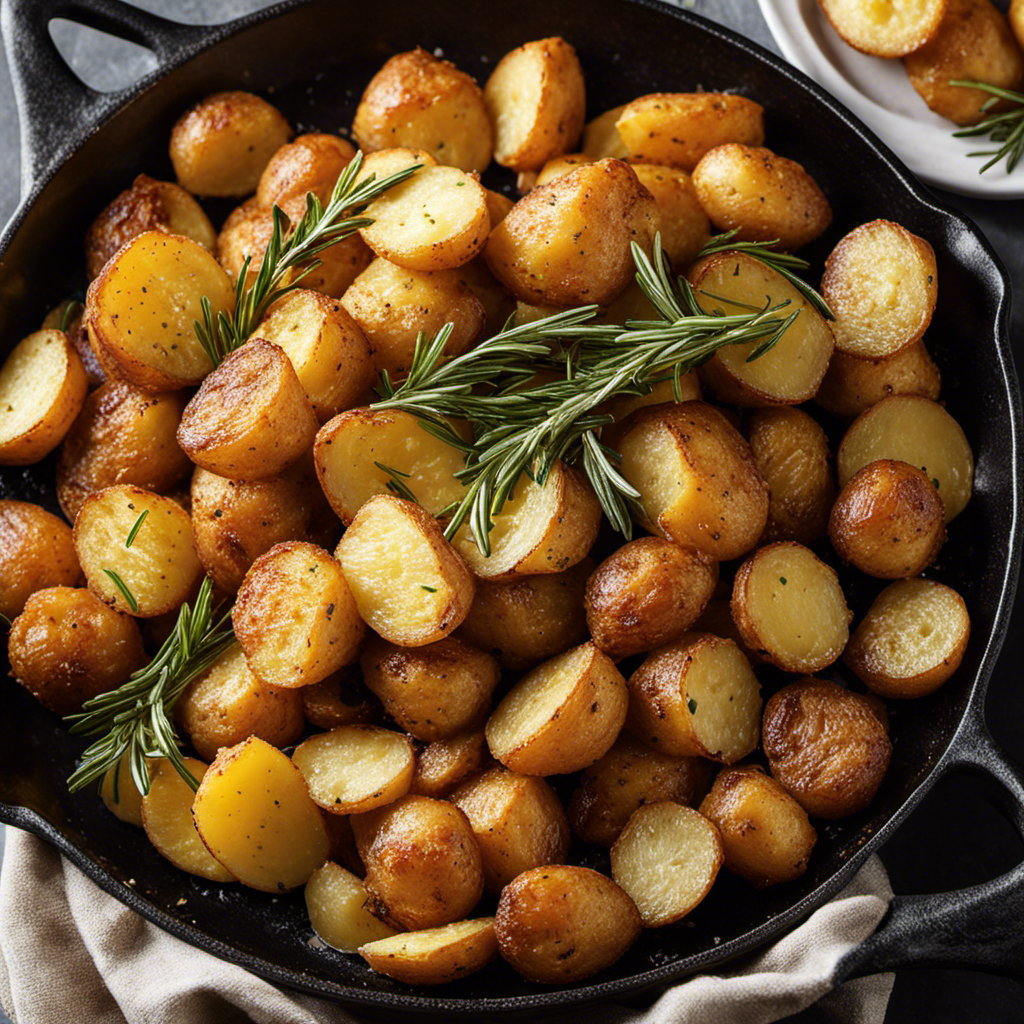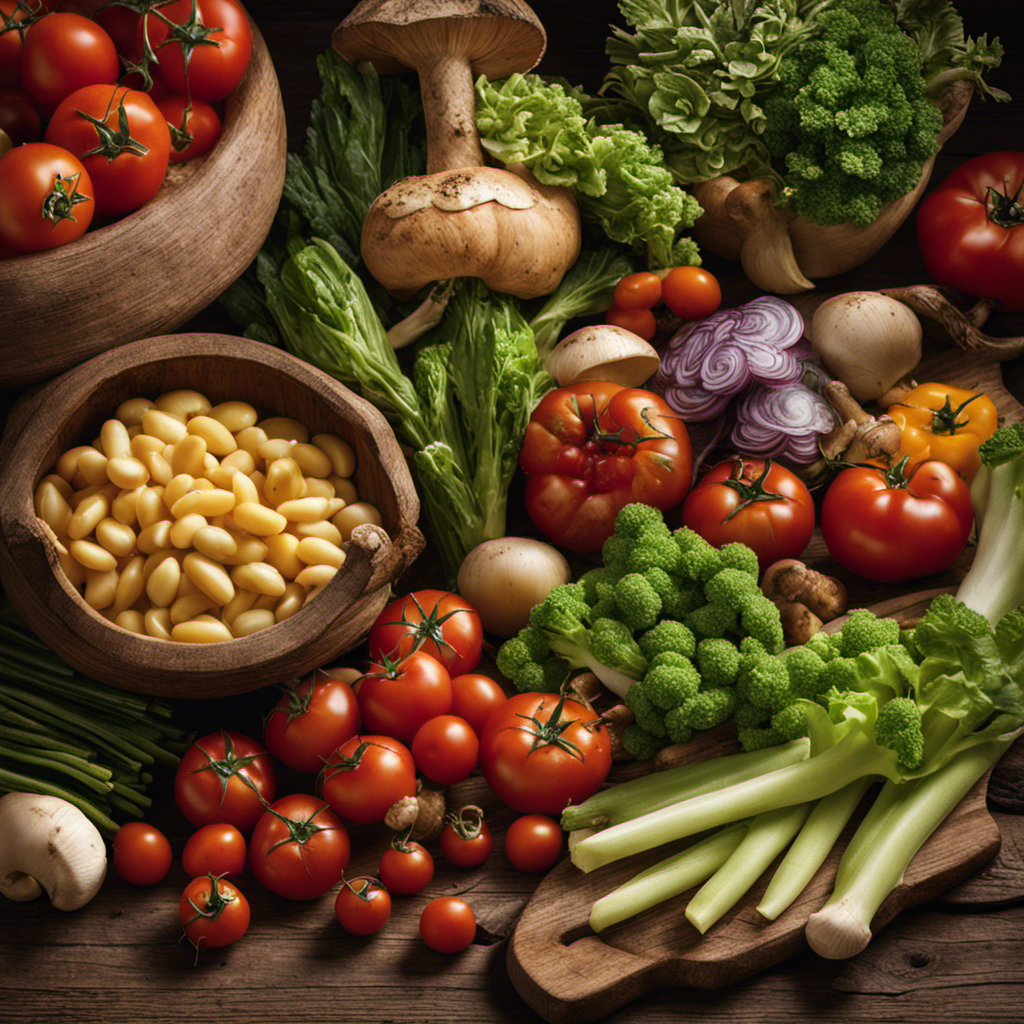I really enjoy the smooth, flavorful taste of salted butter, do you feel the same way? The combination of salty and sweet flavors just takes any dish to the next level.
That’s why I decided to learn how to salt butter at home, and let me tell you, it’s worth every second. In this article, I’ll guide you through the step-by-step process of salting butter, share tips for choosing the right salt, and even suggest some exciting flavors to experiment with.
Let’s dive in and take our butter game to the next level!
Key Takeaways
- Salting butter allows for customization of flavor and the ability to control the quality of ingredients used.
- Different types of salt, such as sea salt and kosher salt, offer varied flavor profiles and textures for a unique culinary experience.
- Experimenting with herbs and spices in salted butter opens up possibilities for delicious combinations and added health benefits.
- Proper storage techniques, such as using an airtight container and refrigerating the butter, help maintain freshness and prevent spoilage.
Tools and Ingredients Needed
You’ll need a mixing bowl, a spatula, and unsalted butter to salt your butter. These tools and ingredients are essential for achieving the perfect salted butter.
The mixing bowl provides a spacious and convenient space to work with the butter, while the spatula allows for easy mixing and spreading.
As for the unsalted butter, it serves as the base ingredient that will be transformed into a delicious and savory salted butter. It is important to start with unsalted butter as it provides a blank canvas for adding the desired amount of salt.
Why Salted Butter Is Worth Making at Home
Making salted butter at home is worth the effort because it enhances the flavor of various dishes. Not only does it add a savory and slightly tangy taste, but it also provides a satisfying crunch when spread on warm bread or used in cooking.
Here are a few reasons why making your own salted butter is beneficial:
- You have control over the amount of salt added, allowing you to customize the taste to your liking.
- Homemade salted butter is free from any additives or preservatives commonly found in store-bought options.
In addition to the delicious flavor, there are health benefits to consider. Salted butter, when consumed in moderation, can provide essential vitamins and minerals, such as vitamin A and calcium. It also contains healthy fats that are beneficial for brain function and heart health.
With these advantages in mind, let’s move on to the step-by-step guide to salting butter.
Step-by-Step Guide to Salting Butter
To start the step-by-step guide, begin by gathering all the necessary ingredients and equipment. You will need unsalted butter, different types of salt such as kosher salt, sea salt, or Himalayan pink salt, and a mixing bowl.
The benefits of homemade butter are numerous. Firstly, you have control over the quality of ingredients used. Secondly, you can customize the flavor by adding different types of salt. The salt enhances the taste of the butter and adds a subtle savory note.
Once you have all the ingredients ready, let the butter come to room temperature. Transfer it to the mixing bowl and sprinkle the desired amount of salt. Mix it thoroughly until the salt is evenly distributed.
Tips for Choosing the Right Salt
When choosing the right type of salt, it’s important to consider factors such as flavor profile, texture, and intended use. Here are some tips to help you make the best choice:
-
Consider the flavor profile: Different types of salt have distinct flavors that can enhance or complement your dish. For example, sea salt has a briny taste, while kosher salt has a milder flavor.
-
Think about the texture: The texture of the salt can affect the overall experience of your dish. Fine-grained salts dissolve quickly, making them ideal for baking and seasoning sauces. Coarse salts, on the other hand, add a satisfying crunch and are great for finishing dishes.
Choosing the right salt can elevate your culinary creations, so take the time to explore the various types available.
Now, let’s move on to the next section and discover different flavors to experiment with in salted butter.
Different Flavors to Experiment With in Salted Butter
As you explore different flavors, you’ll discover that adding herbs and spices to your salted butter can create a delicious and unique taste. Not only does it enhance the flavor of your butter, but it also opens up a world of possibilities for flavor combinations. Experimenting with different herbs and spices allows you to customize your butter to suit your taste preferences. Some popular flavor combinations include garlic and herbs, such as rosemary and thyme, or even adding a kick with chili flakes. These additions not only give your butter a burst of flavor but can also provide health benefits. For example, garlic is known for its antibacterial properties, while herbs like rosemary and thyme are rich in antioxidants. So get creative and start exploring the wonderful world of flavored salted butter!
| Flavor Combination | Health Benefits |
|---|---|
| Garlic and herbs | Antibacterial properties |
| Rosemary and thyme | Rich in antioxidants |
| Chili flakes | Adds a kick to your butter |
| Cinnamon and nutmeg | Anti-inflammatory properties |
How to Store Salted Butter for Longevity
When it comes to proper storage techniques for salted butter, there are a few key points to keep in mind in order to extend its shelf-life.
First, it is important to store salted butter in an airtight container in the refrigerator. This will help prevent any odors from other foods in the fridge from being absorbed by the butter.
Additionally, it is recommended to keep the butter away from any sources of heat or direct sunlight, as these can cause the butter to melt or spoil more quickly.
Proper Storage Techniques
To store butter properly, it’s important to keep it in an airtight container in the refrigerator. This helps to maintain its freshness and prevent it from absorbing odors.
Here are some proper storage techniques to ensure your butter stays in perfect condition:
-
Choose the right container: Opt for a container that is airtight and made of glass or BPA-free plastic. This will help to keep the butter fresh and prevent it from absorbing any unwanted flavors.
-
Keep it cool: Butter should always be stored in the refrigerator, as it can spoil quickly when exposed to heat.
-
Avoid the door: The door of the refrigerator is the warmest area, so it’s best to store your butter on a shelf inside the refrigerator.
-
Use a butter dish: If you prefer to keep your butter at room temperature for easy spreading, use a butter dish with a lid to protect it from air and contaminants.
Extending Butter Shelf-Life
Storing butter in an airtight container in the refrigerator helps to extend its shelf-life. This simple step is crucial in preserving the flavor and quality of butter. By preventing exposure to air and moisture, the butter stays fresher for longer periods of time.
The airtight container acts as a barrier against external elements, such as odors or bacteria, which can compromise the butter’s taste and texture. Additionally, refrigeration helps slow down the natural process of oxidation, which can cause the butter to turn rancid.
By following these storage techniques, you can ensure that your butter stays fresh and delicious for as long as possible.
Now, let’s move on to explore some mouthwatering serving suggestions and perfect pairings for salted butter.
Serving Suggestions and Pairings for Salted Butter
When it comes to serving salted butter, it’s important to consider the perfect bread accompaniment. Whether it’s a warm baguette, a crusty sourdough, or a fluffy dinner roll, the right bread can really elevate the butter’s flavors.
Additionally, salted butter can be a wonderful ingredient for enhancing savory dishes like mashed potatoes, roasted vegetables, or even a simple pasta dish. Its creamy texture and rich taste add a depth of flavor that can take these dishes to the next level.
Perfect Bread Accompaniment
Butter is a perfect accompaniment to any kind of bread. Whether it’s a crusty baguette, a fluffy brioche, or a hearty whole wheat loaf, butter adds richness and flavor to every bite. When it comes to bread, there are endless possibilities for delicious combinations. Here are some ideas to enhance your bread experience:
-
Try different bread recipes: From sourdough to ciabatta, experimenting with different types of bread can bring new flavors and textures to your meals.
-
Explore butter alternatives: If you’re looking for a healthier option or have dietary restrictions, there are plenty of non-dairy spreads and plant-based butters available that can still provide that creamy goodness.
By exploring different bread recipes and considering butter alternatives, you can create unique and satisfying combinations that cater to your taste and dietary needs.
Now, let’s move on to how butter can enhance savory dishes.
Enhancing Savory Dishes
After discovering how to use salted butter as a perfect accompaniment to bread, I couldn’t help but explore its potential in enhancing savory dishes.
Not only does salted butter add a rich and creamy flavor to dishes, but it also brings out the natural flavors of other ingredients. The salt in the butter acts as a flavor enhancer, making every bite more delicious and satisfying.
Additionally, salted butter can provide health benefits when consumed in moderation. It contains essential vitamins like A, D, and E, which are important for maintaining healthy skin, bones, and immune system function. Furthermore, the healthy fats in salted butter can support brain health and provide energy.
Frequently Asked Questions About Salting Butter
If you’re unsure about the best time to add salt to your butter, you can find answers to frequently asked questions right here. Here are some common queries about salting butter:
-
Choosing the right type of salt:
-
Which type of salt is best for salting butter?
-
Can I use table salt instead of sea salt?
-
Adding flavor to salted butter:
-
How can I add different flavors to my salted butter?
-
What are some popular flavor combinations for salted butter?
When it comes to choosing the right type of salt for salting butter, it ultimately depends on personal preference. Sea salt is often favored for its natural flavor and texture, while table salt is more commonly used due to its affordability and availability.
To add flavor to salted butter, you can experiment with various herbs, spices, or even citrus zest. Some popular combinations include garlic and parsley, chili and lime, or even truffle and thyme. The possibilities are endless, so don’t be afraid to get creative and find your own unique flavor profile for salted butter.
Frequently Asked Questions
How Long Does It Take for Butter to Become Salted?
It takes about 15-20 minutes for butter to become salted. To speed up the process, soften the butter and mix in the desired amount of salt. Yes, salted butter can be used in recipes that require unsalted butter.
Can I Use Any Type of Salt to Salt Butter?
Yes, you can use any type of salt to salt butter. However, there is a difference between table salt and sea salt. Sea salt, like Himalayan or kosher salt, is often recommended as the best types of salt for salting butter.
What Is the Difference Between Salted Butter and Unsalted Butter?
The difference between salted butter and unsalted butter is the presence of salt. Salted butter has a savory taste, while unsalted butter is more neutral. Culinary uses vary depending on the desired flavor profile of the dish.
Can I Add Other Herbs or Spices to Salted Butter?
Adding herbs to salted butter is a great way to enhance its flavor. You can experiment with various herbs and spices like garlic, rosemary, or thyme. Simply mix them into softened butter and enjoy the delicious results.
Can Salted Butter Be Used in Baking Recipes That Call for Unsalted Butter?
Yes, salted butter can be used in baking recipes that call for unsalted butter. However, keep in mind that it may affect the taste of the final baked product. You can adjust the amount of salt in the recipe if using salted butter.
Conclusion
In conclusion, salting butter is a simple and rewarding process that can elevate your culinary creations to new heights. By following the step-by-step guide and experimenting with different flavors, you can create a personalized salted butter that is bursting with flavor.
Remember to choose the right salt and store it properly to ensure its longevity. Whether you’re spreading it on toast or using it in your favorite recipes, salted butter adds a touch of richness and complexity that is sure to impress.
So go ahead and embark on this buttery adventure, and let your taste buds dance with delight!
